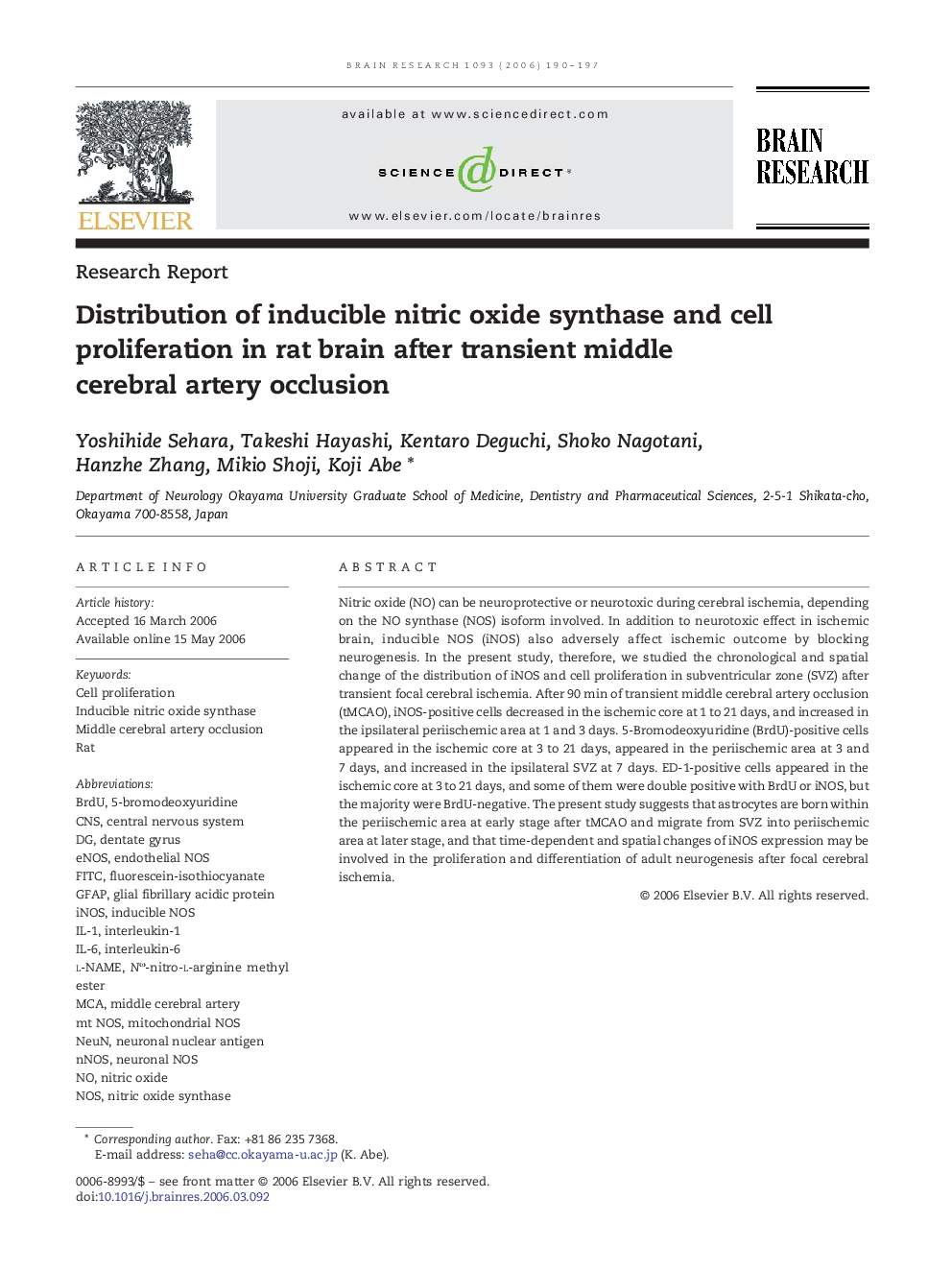| Article ID | Journal | Published Year | Pages | File Type |
|---|---|---|---|---|
| 4332810 | Brain Research | 2006 | 8 Pages |
Nitric oxide (NO) can be neuroprotective or neurotoxic during cerebral ischemia, depending on the NO synthase (NOS) isoform involved. In addition to neurotoxic effect in ischemic brain, inducible NOS (iNOS) also adversely affect ischemic outcome by blocking neurogenesis. In the present study, therefore, we studied the chronological and spatial change of the distribution of iNOS and cell proliferation in subventricular zone (SVZ) after transient focal cerebral ischemia. After 90 min of transient middle cerebral artery occlusion (tMCAO), iNOS-positive cells decreased in the ischemic core at 1 to 21 days, and increased in the ipsilateral periischemic area at 1 and 3 days. 5-Bromodeoxyuridine (BrdU)-positive cells appeared in the ischemic core at 3 to 21 days, appeared in the periischemic area at 3 and 7 days, and increased in the ipsilateral SVZ at 7 days. ED-1-positive cells appeared in the ischemic core at 3 to 21 days, and some of them were double positive with BrdU or iNOS, but the majority were BrdU-negative. The present study suggests that astrocytes are born within the periischemic area at early stage after tMCAO and migrate from SVZ into periischemic area at later stage, and that time-dependent and spatial changes of iNOS expression may be involved in the proliferation and differentiation of adult neurogenesis after focal cerebral ischemia.
